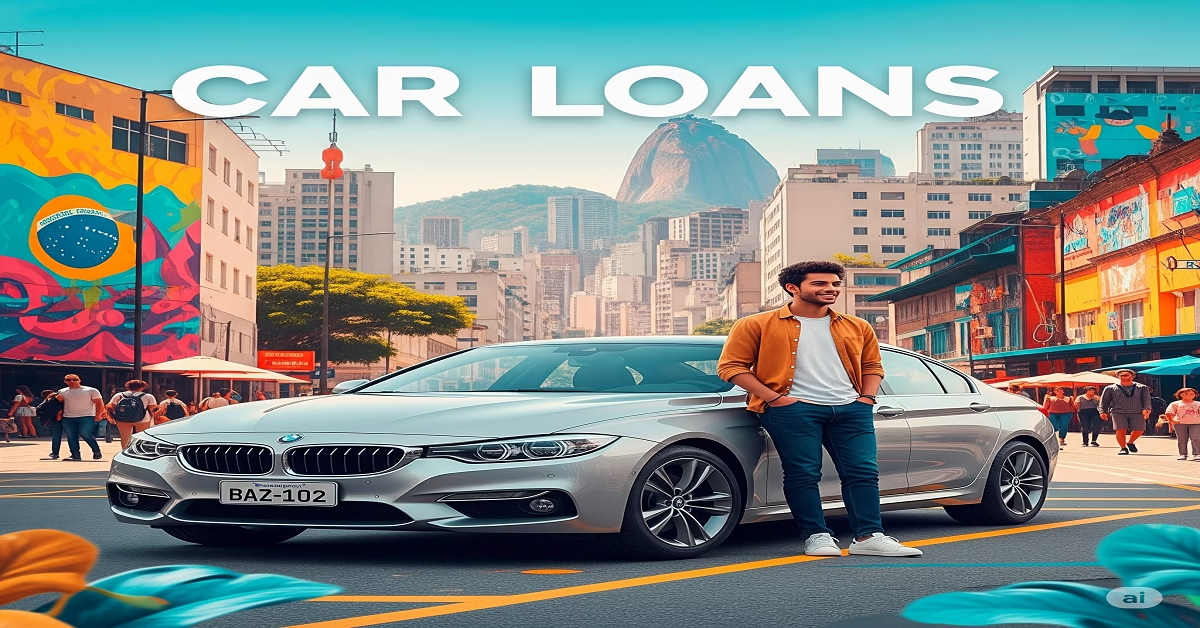Car Loans in 2025: Drive Smarter, Not Harder

Are you dreaming of a new set of wheels in 2025? Or perhaps looking to upgrade your current ride? Navigating the world of car loans can feel like a complex journey, but with the right knowledge, you can steer clear of pitfalls and secure the best deal. This comprehensive guide will equip you with everything you need to know about car loans in the current landscape, especially considering the unique dynamics of the Brazilian market.
The automotive financing industry is constantly evolving, and 2025 is no exception. From fluctuating interest rates to the rise of digital platforms and the growing appeal of electric vehicles, understanding these trends is crucial for making informed decisions.
Car Loans: What to Expect in 2025
Brazil’s car loan market in Q1 2025 has shown resilience despite a challenging economic environment marked by high inflation and elevated interest rates. While interest rates for individuals on free credit loans (loans with unrestricted market conditions) have been on the rise, reaching an average of 56.3% per year in February 2025, the market for car loans, particularly for used vehicles, continues to expand.
Several key trends are shaping the market:
- High Interest Rates: Brazil’s benchmark interest rate (Selic) has been high, influencing the cost of borrowing. As of June 2025, the Selic rate stands at 15%. This translates to higher overall lending rates for consumers. For instance, Bankrate predicts that by the end of 2025, five-year new car loan rates in the US could average 7.0%, with used car loans around 7.75%. While these are US figures, they indicate a global trend of elevated rates.
- Shifting Consumer Preferences: With the rising cost of new vehicles, partly due to the depreciation of the Brazilian Real, the used car market is booming. Consumers are increasingly seeking more affordable alternatives, with strong demand for SUVs and compact cars due to their versatility and fuel efficiency. There’s also a noticeable shift towards used electric and hybrid vehicles, spurred by government incentives and environmental awareness.
- Digital Transformation: The car loan application and approval process is becoming increasingly digital. Online marketplaces and digital lending solutions are enhancing accessibility and streamlining transactions, making it easier for consumers to compare offers and secure financing. Lenders are leveraging AI for credit risk analysis and personalized offers.
- Focus on EVs: The increasing adoption of electric vehicles (EVs) is a major trend. While EVs often have higher upfront costs, tailored loans with longer terms or government incentives are emerging to support this transition. Lenders are incorporating sustainability metrics into their portfolios, offering “green financing” options.
- Subprime Lending: Lenders are cautiously expanding into subprime lending to meet demand from underserved credit segments, balancing risk with the opportunity for revenue. AI and behavioral analytics are being used to mitigate default risks in this segment.
- Flexible Payment Options: Consumers are seeking more flexibility, leading to the emergence of payment holidays, adjustable schedules, and even subscription-based car ownership models.
- Rising Delinquencies: Economic volatility is contributing to an increase in auto loan delinquencies, prompting lenders to tighten credit policies and focus on proactive loan recovery strategies.
Understanding Car Loan Basics

Before you dive into applications, familiarize yourself with these core concepts:
- Interest Rate (APR): This is the cost of borrowing money, expressed as a percentage of the loan amount. A lower APR means lower monthly payments and less interest paid over the life of the loan. Always compare Annual Percentage Rates (APRs), which include all relevant costs, not just the nominal interest rate.
- Loan Term: This is the length of time you have to repay the loan, typically ranging from 24 to 84 months. Shorter terms mean higher monthly payments but less total interest. Longer terms offer lower monthly payments but accumulate more interest over time.
- Down Payment: The initial amount of money you pay upfront. A larger down payment reduces the amount you need to borrow, potentially leading to lower interest rates and smaller monthly payments.
- Credit Score: Your creditworthiness is a significant factor in determining your interest rate. A higher credit score signals lower risk to lenders, often resulting in more favorable terms.
- Fees: Be aware of potential fees like origination fees, prepayment penalties (if you pay off the loan early), and late fees.
Strategies for Securing the Best Car Loan in 2025
Given the current market dynamics, here’s how to position yourself for success:
- Know Your Credit Score (and Improve It!): This is paramount. The better your credit, the better your rates. Access your credit report, identify areas for improvement, and take steps to boost your score (e.g., paying down debt, making on-time payments). For prime borrowers in Brazil, average new car loan rates were around 6.70% in Q3 2024, compared to 13.00% for subprime borrowers.
- Shop Around Extensively: Don’t settle for the first offer. Compare rates and terms from various lenders, including:
- Banks: Offer a wide range of auto loans.
- Credit Unions: Often provide more competitive interest rates than traditional banks.
- Captive Finance Lenders: The financing arms of car manufacturers, which may offer special incentives on new cars.
- Online Lenders/Fintechs: These digital platforms can offer competitive rates and streamlined application processes.
- Consider a Larger Down Payment: If feasible, putting down more money upfront can significantly reduce your loan amount and potentially qualify you for a lower interest rate.
- Evaluate New vs. Used: While new cars might qualify for slightly lower interest rates due to lower risk for lenders, the rising cost of new vehicles in Brazil is pushing more consumers towards used cars. The average interest rate for a used car loan in Q4 2024 was 11.62% in the US, compared to 6.35% for new cars. However, the average monthly payment for used cars was significantly lower ($525 vs. $742).
- Be Mindful of Loan Terms: While longer terms mean lower monthly payments, they also mean more interest paid over the long run. Calculate the total cost of the loan for different terms to see the true impact.
- Explore Green Financing Options: If you’re considering an EV or hybrid, ask about specific “green financing” programs or incentives that might offer more favorable terms.
- Don’t Overlook Dealer Incentives: Dealerships sometimes offer special financing deals, especially on new vehicles. However, always compare these to offers from independent lenders.
- Understand Your Budget: Before you even start car shopping, determine how much you can truly afford for both the monthly payment and the total cost of the vehicle. This includes factoring in insurance, maintenance, and fuel costs.
- Consider a Cosigner (If Necessary): If your credit isn’t ideal, a loved one with good credit can cosign your loan, potentially helping you secure better terms. Ensure they understand their responsibilities.
The Road Ahead
The car loan market in 2025 will continue to be dynamic. While high interest rates may persist, the increasing digitalization of financing, the growing appeal of used and electric vehicles, and the emergence of more flexible payment solutions will offer new opportunities for consumers. By being proactive, informed, and strategic in your approach, you can navigate these complexities and secure a car loan that puts you in the driver’s seat of your financial future.
You can also Read:
